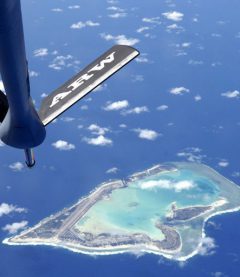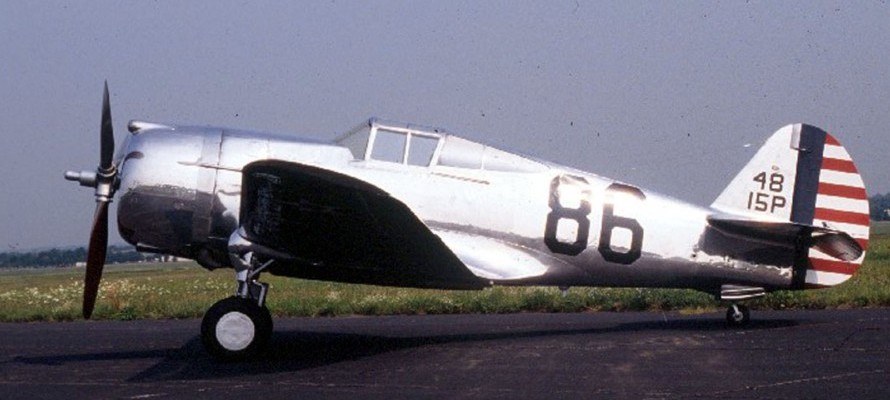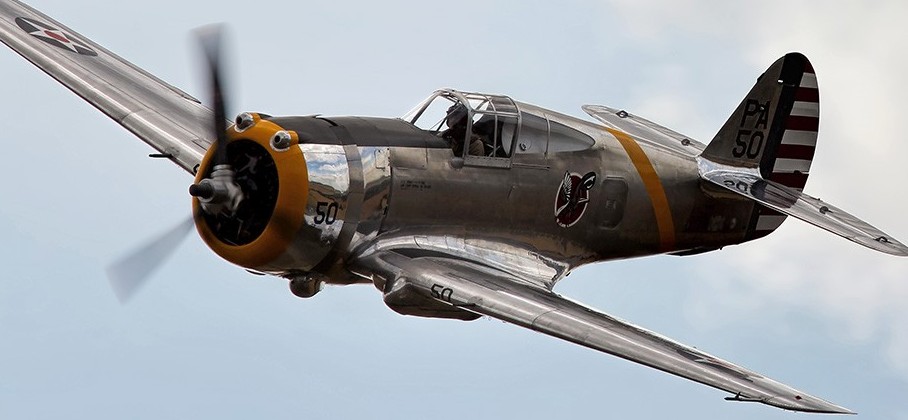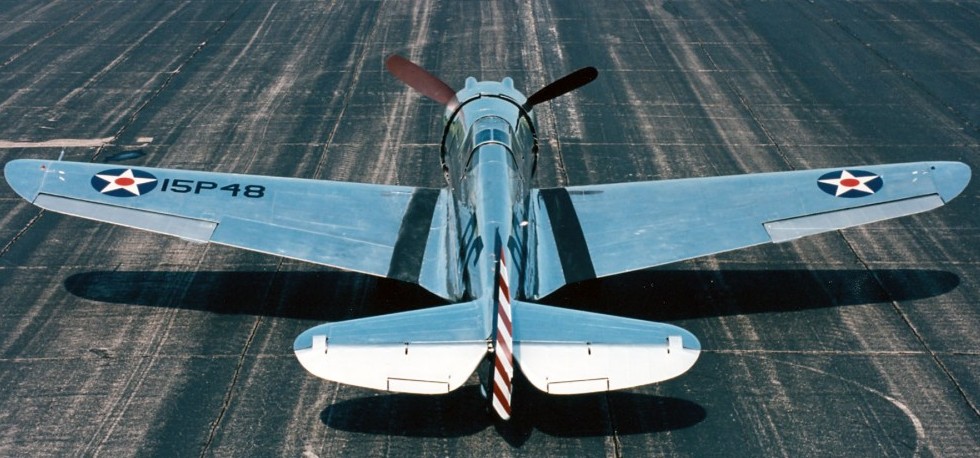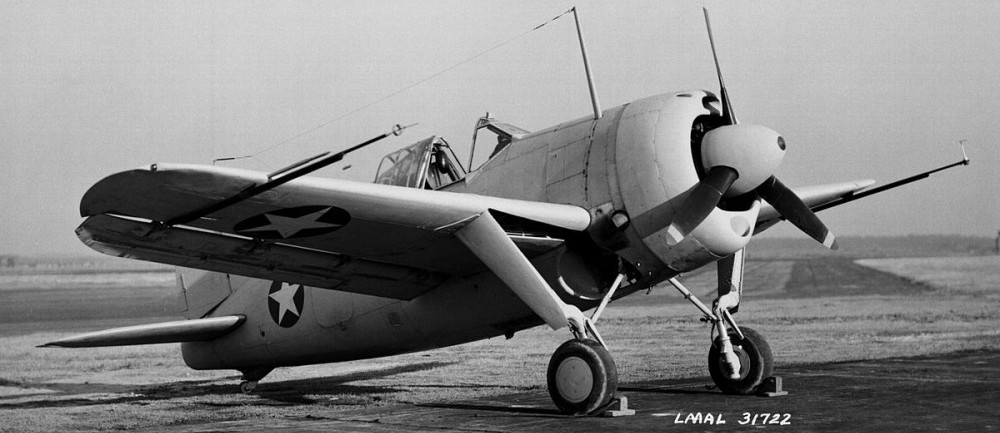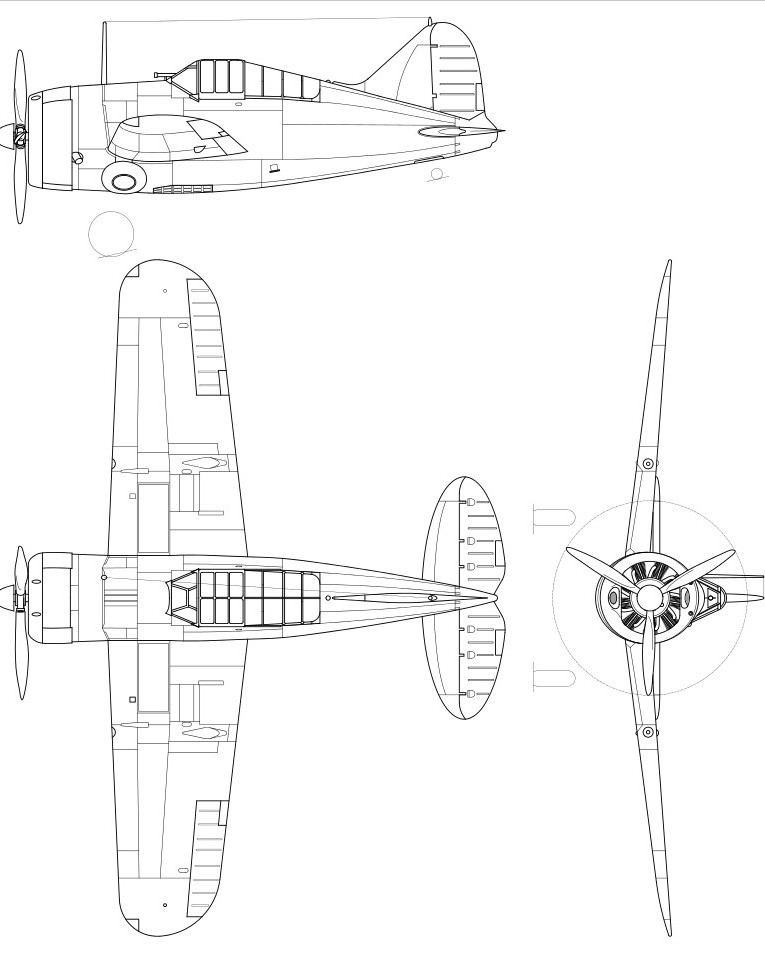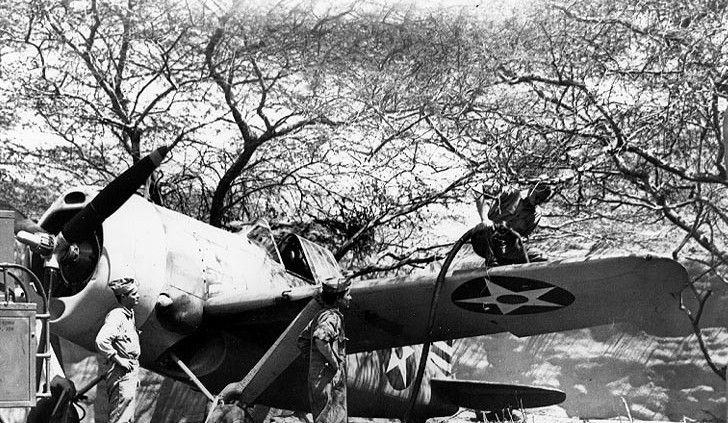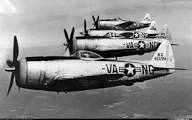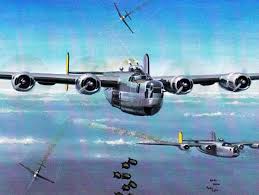
Introduction
The B-24 Liberator bomber was designed by Consolidated Aircraft of San Diego. In World War II it was used by the United States Army Air Corp (USAAC), United States Navy (USN), the Royal Air Force (RAF), and other allies.
The first flight was on 29 December 1939 and the Indian Air Force retired the last B-24 operating in a military capacity in 1968.
Almost 19,000 B-24s were built during World War II, the Ford Motor company produced over 8,000 B-24s alone at their Ypsilanti Michigan plant.
The B-24 long with the B-17 Flying Fortress were the mainstays of the USAAC during the War. The B-24 was used in all theaters of WWII. The USN used the B-24 named PB4Y-2 for its operation in the Pacific Ocean. It was a great submarine and small convoy patroller due to its long range loiter time.
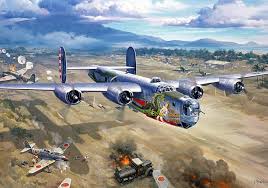 Design and Deveopment
Design and Deveopment
The USAAC issued a request in 1938 to the Consolidated Aircraft Company to build the Boeing B-17 Flying Fortress in San Diego. Consolidated executives went to Boeing in Seattle Washington to discuss the request with USAAC representatives .
They offered the military instead, a new design with a new high-efficiency airfoil design. The some of the features came from the Consolidated Model 31 flying boat.
Most notably was the twin tails rudders. But with the new wing design as well as a new fuselage it was a totally different aircraft, the big difference it was a land base 4-engined bomber.
The new “Davis” wing design. enabled the aircraft to fly at higher speeds and carry a little higher payload than the B-17. But the design had one draw back, it had handling difficulties at high altitudes and with a heavy load. It was not a favorite with crews who preferred the B-17 due to flying difficulties.
In 1942, Consolidated began testing a single fin/rudder system that greatly improved handling of the aircraft. By the time the tests were over, the order for the 5,000 single tail B-24s was cancelled because the War was over.
The original B-24 was unstable at various configurations. So most of the crews had to fight the handling problems throughout the war, especially in Europe.
The B-24 was the first American bomber to use tricycle landing gear. it has differential braking differential thrust making ground handling a little tricky.
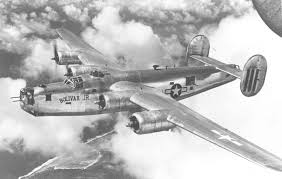
Operational History
Besides the USAAC’s need for B-24, the RAF and Franc put in orders for the B-24. The British and French needed them earlier than the U.S. did because the War had started in Europe in 1940.
France had ordered about $40M of the B-24s and had received some of the order when France fell. The French B-24 fleet was transferred to England and used throughout the War.
The first use of the B-24 by the RAF was in 1941 anti-submarine patrols in the Atlantic which could cover the “Mid-Atlantic Gap”. The Mid-Atlantic Gap was an area of the Atlantic where the shorter ranged Allied parol anti-submarine could not operate.
In the “Gap”, the German U-boats could operate with no fear of ariel attack. The B-24 helped end the U-Boats freedom in the “Gap”.
Many of the early B-24s were converted into cargo/troop haulers at the outset of the War because none of the Allies had an long-rang transports.
The Liberator as a non-combat freighter flew the Atlantic from London-Canada/USA, London-Egypt and help evacuate the Dutch West Indies later in the early days of WWII.
After the attack on Pearl Harbor in 1941, the USAAC was the biggest user of the B-24. The B-24 was used in the European , African, China-Burma, Anti-Submarine, Pacific Theaters by the Americans.
In 1942, B-24s flew from Egypt and bombed the Romanian Oil fields at Ploiesti, Romania in a series of raids. Later in August 1943, One large raid of 177 B-24s were assigned to bomb Ploiesti. The raid was very costly as 54 B-24s were lost. Tactics were changed to low level bombing which proved very successful against that target.
The majority of B-24 use waere bombing runs by the B-24 out of England over Germany. The B-24 was also useful flying out of North Africa bombing targets in Italy.
After Italy had fallen to the Allies, the B-24 weas then used to bomb Germany from bases in the former Axis country.
A cargo/troop hauler version of the B-24 was the C-109. The C-109 was a conversion of the B-24 to cargo. It was to be used in support of the B-29 Superfortress. It could carry any type of cargo, but most of the time it was used to to haul fuel to remote area of the Pacific. There were 219 B-24 s were converted to C-109.
The USN used the B-24 (called the PB4y-1) to hunt for Japanese submarines and small convoys that usually were not escorted by Japanese warships.
My neighbor was a waist gunner in the Navy on the PB4y-1. He recalls the story of one mission, they spotted a small convoy of 3 Japanese freighters . They began their strafing run with the 50 cal machines from the nose of the aircraft.
Before they had reached the ship they were strafing, it blew up as it was it carry ammunition. In fact, when it blew up in begin to send shrapnel in all directions. The PB4y-1 was hi in the tail section of the aircraft severely damaging the elevators and partially damaging the rudders.
The aircraft became almost impossible to control, but the pilot and co-pilot mad a superhuman effort to stabilize it somehow .
They diverted into Okinawa. The problem there was there was an intense fight going on there, called the “Battle of Okinawa”. Fortunately for my neighbor, the airstrip was in American hands and they were able to land safely. The PB4y-1 was written off because of severe battle damage.
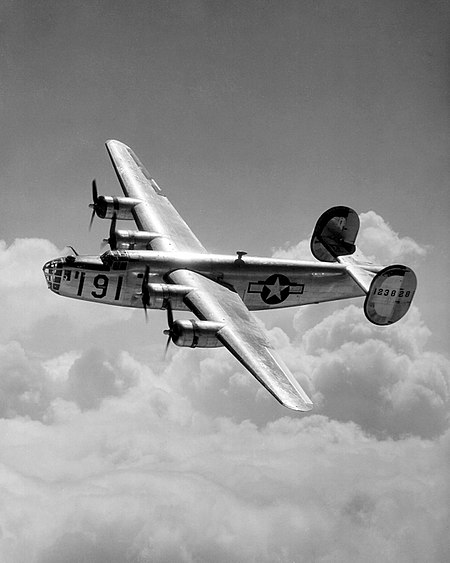
He tells of another story where they were assigned to straff the harbor at Truk Island in the Marshall Islands. Their aircraft was based at Saipan Island in the Marianas in the Pacific. It was a day before my neighbor turned 21 years old. At the time Turk Island was in Japanese hands and a major harbor/base.
They started their strafing run at just above the waves. As they flew into the harbor, my neighbor could see anti-aircraft fire coming from both sides of the aircraft. The miracle was that although they were hit, the aircraft received no serious damage. My friend received a flesh wound in which in he received a purple heart.
In all, 18,482 B-24s were built by September 1945. The USN received 977 PB4ys and 739 Privateers (single tail instead of twin tails); RAF 2,100; Royal Canadian Air Force, 1,200; the Royal Australian Air Force 287. There were over 60 variants, models and sub-models of the B-24.
Although it may not have been a crew favorit it was a reliable heavy bomber workhorse of World War II
Here are a few places to see this wonderful old aircraft:
Diamond Lil Commemorative Air Force , Arlington Texas
41-23908 (No Nickname) (being restored at Hill Aerospace Museum, Roy Utah)
Strawberry Bitch -National Museum of USAF, Dayton Ohio
Flying Wolf (being restored at Werribee, Victoria Australia).
Shady Lady – Castle Air Museum, Atwater, California.
Bungay Buckaroo Pima Air and Space Museum, Tucson Arizona
All American Collings Foundation, Stow Massachusetts.
Joe Fantasy t of Flight, Polk City Florida.
Louisiana Belle II Bossier City Louisiana.
44-50154 (No Nickname) Ottawa, Ontario
Flying Bee RAF Museum, London England
Dugan Imperial War Museum, Cambridgeshire England
Check with your local air museum in your area to visit this fine venerable Warrior.
Tech Specs for the B-24 Liberator
Wing Span: 110 ft 0 in
Length: 67 ft 8 in
Height: 18 ft 0 in
Weight: 36,000(Empty) 55,000 lbs (MTOW)
Max Speed: 290 mph; Cruise: 215
Ceiling: 28,000 ft
Range: 2,100 sm (mission) 3,700 (ferry)
Engine: 4/Pratt & Whitney R-1830-35 Turbocharged Radial Engines Rated at 1,200 H
Crew: 11 (Pilot, Co-Pilot, Navigator, Bombardier, Radio Operator, Nose Turret, Top Turret, 2 Waist Gunners, Ball Turret, Tail Gunner)
THANKS FOR READING! I HOPE THIS WAS INFORMATIVE!


